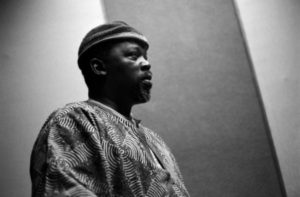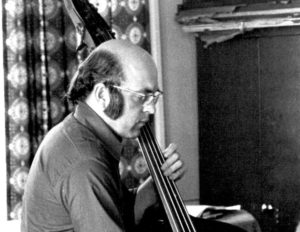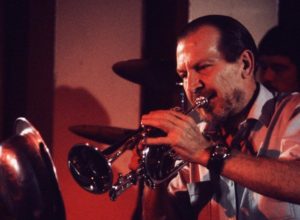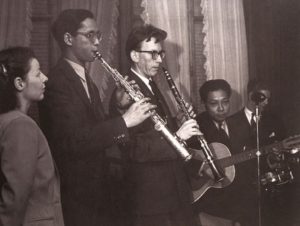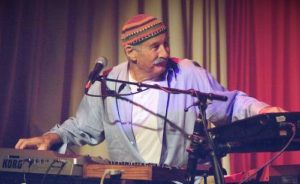Ken ‘Snakehips’ Johnson
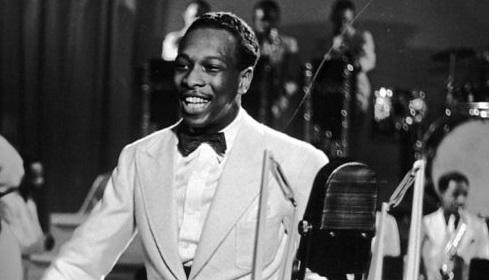
Ken ‘Snakehips’ Johnson (1914-1941) was born in Georgetown, in what was then British Guiana. He attended Queen’s College in Georgetown before his parents sent him to study in England at the age of 15. After leaving school, he studied medicine at Edinburgh University, but gave up the idea of becoming a doctor to puruse an interest in dance. He learned to tap dance with African American choreographer, Charles ‘Buddy’ Bradley, who had moved to the UK in 1933. His dancing earned him his nickname ‘snakehips’.
After trips to USA and the West Indies, he returned to Britain, and appeared in a 1935 feature film Oh Daddy, before joining multi-instrumentalist Leslie Thompson‘s Jamaican Emperors. In 1936, he started his own band, which became the West Indian Orchestra, and which featured some of the finest Caribbean jazz musicians of the age, including trumpeter Leslie ‘Jiver’ Hutchinson, saxophonist Bertie King and pianist Yorke De Souza from Jamaica, and clarinetist Carl Barriteau from Trinidad. They recorded four sides for Decca in 1938, which demonstrate the band’s ability to swing, though there are a few solos.
The band became one of the most popular dance bands of the late 1930s, with residencies at the Florida Club and from 1939 at the Cafe de Paris in Coventry Street. Popular singer Al Bowlly became friendly with Johnson and guested with the band live as well as on BBC wartime broadcasts. In April 1940, the band recorded 12 tracks for HMV, including two with Bowlly. On 8th March 1941, during an air raid, the Cafe de Paris was hit by two bomb, killing 34 people, including Johnson and saxophonist David ‘Baba’ Williams. Just over a month later, Bowlly too was killed by a Luftwaffe mine. As leader of the band, Johnson himself did not appear on his records, which makes it hard to guage his own musicality. Surviving footage from ‘Oh Daddy’, limited though it is, shows he was a great dancer and his death was mourned by the music press as well as colleagues. He is well remembered for leading one of the most jazz-oriented of dance bands in the years leading up to World War Two. The fact that it was an all-black band certainly makes it especially interesting in 1930s Britain.
Key Recordings:
Existing tracks can be heard on various collections, including Black British Swing (Topic 2006)
